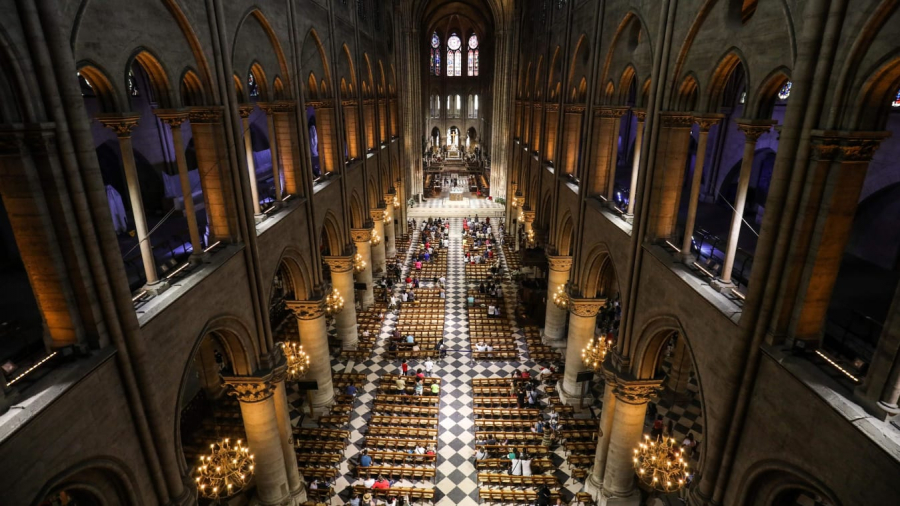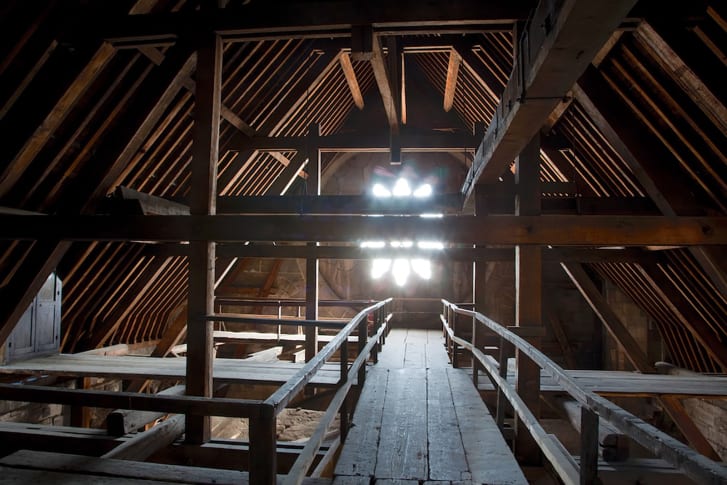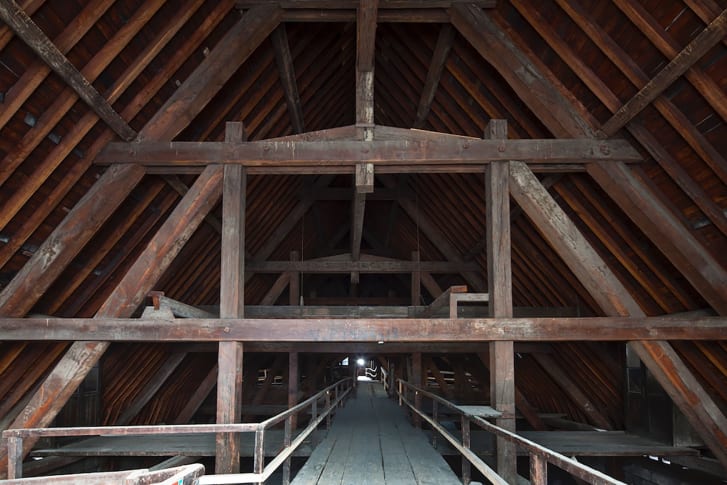The timber frame of Notre Dame Cathedral is predominantly oak, containing beams that date back quite a long way. For example, the first frame built for the cathedral was made from trees felled between 1160 and 1170, making it one of the oldest frames in the Cathedral's structure.

According to the Notre Dame website, most of the frames were reinforced in 1220. The modern frames, which are the second layer, reflect adjustments made early in the construction of the cathedral. The dimensions of these frames are very large, measuring 100 meters long and 10 meters high. In the nave, the frame is 13 meters wide, and the transept is 10 meters high.
In medieval times, carpenters first built the frame on the ground to achieve those exact dimensions and structure. Workers would then disassemble the frame and lift it up to the ceiling, where it would be completely reassembled. Once in place, the beams would open up a 55-degree view of the horizon.

The prevailing architecture of Notre Dame Cathedral is Gothic with high vaulted ceilings. To match this design and construction style, the Cathedral required tall, sturdy oak trees from a nearby forest to facilitate construction.
The project then began with 21 hectares of oak. Each beam of the intricate wooden cross-sections was sourced from a different tree, so an estimated 13,000 trees were used in the interior of the Cathedral. In order to achieve the high quality required by the carpenters to build the Cathedral’s tall structure, the oak trees were selected to be between 300 and 400 years old, meaning they would have been planted as early as the eighth or ninth century.

The wood used to make the wooden frame is about 300 or 400 years old.
This wooden frame structure was formed as a support for the roof - made of lead and weighing 210 tons. The lead frame has the advantage of being fireproof, according to information from the French National Library. However, the wood supporting the lead roof is likely to catch fire because the area used is too large, so after the fire on the night of April 15, it is possible that all the valuable oak wood inside the cathedral could have been completely burned.

































